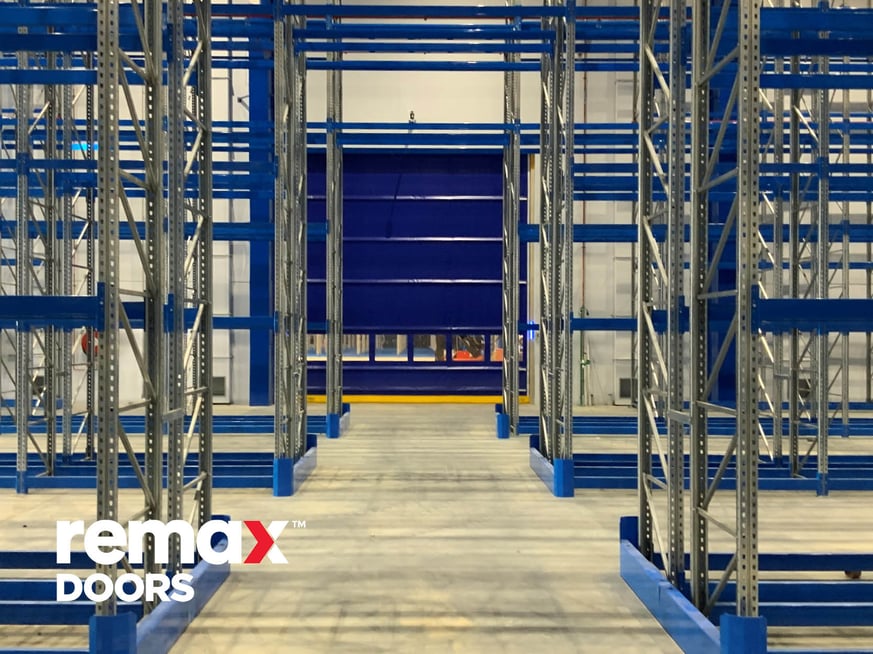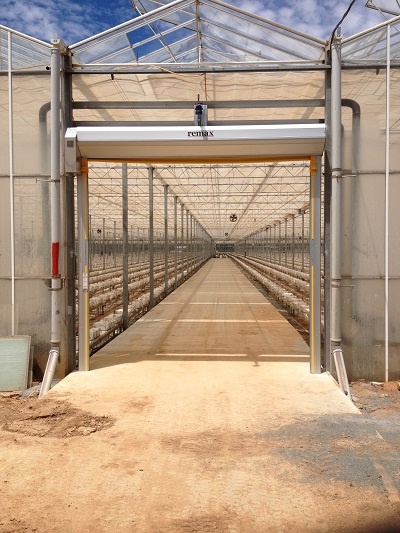Best practices for managing a cold storage warehouse
Solutions for maintaining temperatures in your cold facility
Shippers have been managing the challenge of transporting temperature-sensitive goods since the 1700s, when British fishermen began using ice to preserve their catch while at sea.
Today, the market for cold chain products is expanding rapidly. As worldwide demand for perishable products grows, efficient and effective cold chain management requires robust systems and quick reactions.

Developing countries are driving some of this growth. "Even with the economic downturn, overall quality of life is improving globally," says Curtis Foltz, executive director of the Georgia Ports Authority. "People with more economic means are more likely to consume vegetables, fruits, and protein-based products, creating higher demand for these products worldwide."

Along with this increased interest in better living, the popularity of TV cooking shows and home amateur cooking in general are giving new life to regular ingredients. More than ever, consumers are more aware of what is available to them.
Preserving quality and safety across the supply chain
Correctly maintaining the temperature of perishable products is necessary to preserve quality and safety, from the point of harvest or manufacture right through the supply chain to the consumer.
For food products, failing to maintain proper shipment temperature can result in textural degradation, discoloring, bruising, and even microbial growth.
While the United States' focus on cold chain safety is continuously evolving, some developing countries are not yet keeping pace. The US imports about 30 percent of its fruits and vegetables, and foods imported from less mature markets – where access to refrigerated trucks may be limited, for instance – can present a challenge. For this reason, a holistic view of the cold chain is vital.
"Complete visibility and traceability is incredibly important in case of recalls," says Don Schoenl, president and chief executive officer of Nordic Cold Storage, an Atlanta-based warehouse operator specializing in cold storage and distribution services to food producers, distributors, and retailers. "Our ability to track a product from production or harvest all the way to consumption is critical for ensuring quality."
Technology plays a significant role in enabling cold chain traceability and data exchange.
Cold chain key considerations and best practices
Since cold chain logistics requires maintaining temperature integrity, controlling all the processes involved calls for high levels of integration and coordination. Each supply chain step and partner – from farmer/harvester or producer to the ultimate seller – shares responsibility.
There are multiple phases and facilities along the way which contribute to keeping products fresh. For example, cold chain transportation units are commonly designed to keep ambient temperature constant, not to bring a shipment to the optimal temperature. But if a shipment is not adequately prepared and conditioned, its quality may be compromised.

What's more, if a shipment will be exposed to extreme cold or heat along the transport route, considerations should be made to protect the products in transit. Transportation that extends over multiple days provides a host of opportunities for breaking the cold chain.
"Route selection is important in order to maximize cold chain performance, especially in winter and summer," says Hernandez. "In extreme temperatures, companies should select routes that minimize the number of times doors must be opened".
Hernandez continues to say that "a lot of monitoring and management goes into handling cold chain shipments. Knowing about extreme weather conditions in advance helps optimize equipment use and better protect products."
Contingency planning in cold chain logistics
Contingency planning is also important. If a truck breaks down, or a refrigeration unit stops working, the carrier or 3PL must be ready to respond.
Even with the best systems and monitoring technology, an unplanned delay or rerouting could potentially jeopardize shipment stability. Shippers should work with their transportation partners to develop contingency plans that clearly map out a strategy in the event of a delay.
Guarding against vulnerabilities
The entire cold chain process should be about minimizing the time it takes to move a product through the system. Efficiency is key and vulnerabilities occur if there are delays in handing product off from one facility or stage to another.
To manage cold chain shipments well, all parties must foster a strong partnership. Everyone needs a good working knowledge of best practices for cold chain handling and transportation. Food products have to move as fast as possible to give consumers the most valuable, nutritious, wholesome product, with as much shelf life as possible.
How warehouse automation can result in savings
As the cost of energy, land and labour climbs, operators of cold storage warehouses are increasingly looking to automation to control costs.
“There are a growing number of automated point solutions that can drastically reduce escalating operational costs,” says Jeff Hedges, director of business development for Dematic. In some instances, automation can reduce space requirements by as much as 50%, reduce energy consumption by 80% and labor as much as 70%.
Those savings are realised by:
- Maximising the cube with dense storage
- Controlling heat loss
- Automating palletizing
Solutions for maintaining different temperature zones in your cold facility
Energy savings is a recurring theme in cold storage, simply because it’s more expensive to cool air than to heat it. At the same time, different products require different temperatures. For example, vegetables can be stored below 12°C, dairy products are stored just above freezing at 1°C, meat is stored just below freezing at -2°C and ice cream is stored at –23°C.
This can create challenges for third-party logistics (3PL) providers who may on-board or off-board clients throughout the course of the year with different storage requirements.
“In the cold storage environment, reconfiguring space isn’t as simple as it is in a conventional warehouse because you have to take temperature into account,” explains Ray Stahnke, account manager at Randall Manufacturing.
In segregating different areas of a cold facility to account for different temperature variants, its important to find access systems that prevent temperature variation as traffic passes from one room to the next. With a complete surround seal and operating speeds of up to 2 and 3 meters per second, rapid roller doors can not only allow for much faster access throughout different areas of your building, but close quickly behind the traffic. This ensures there is minimal air transfer between openings, and reduces the impact on temperature maintenance in the facility.
Expert advice on managing a cold storage warehouse
For more information about cold storage warehouses, get in touch with the expert Remax team online or call us on 1800 010 221.




